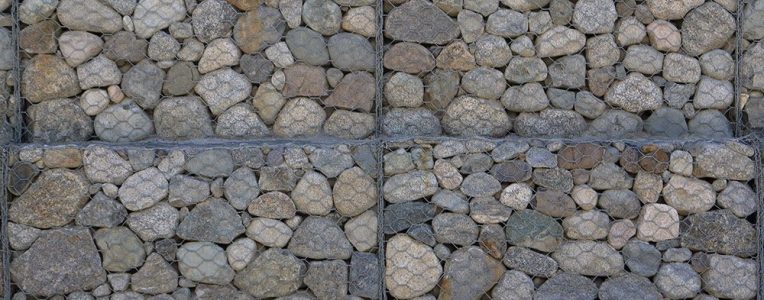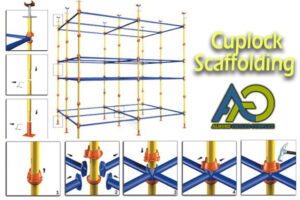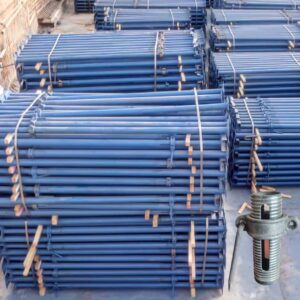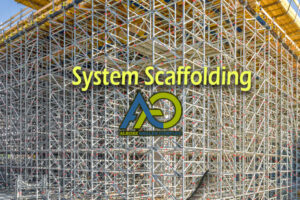Gabion baskets, often referred to as stone cages, are wire mesh containers filled with stones or other durable materials, widely utilized in civil engineering and construction projects. Known for their strength, flexibility, and cost-effectiveness, gabion baskets have become a go-to solution for applications such as retaining walls, dam construction, and erosion control. In this comprehensive guide, we’ll dive into the features, benefits, applications, design considerations, and installation process of gabion baskets. Additionally, we’ll explore how complementary equipment like system scaffolding can enhance the efficiency and safety of gabion projects.
What Are Gabion Baskets?
Gabion baskets are robust wire mesh structures designed to hold stones, gravel, or other fill materials. Typically made from galvanized or PVC-coated steel wire, these baskets are assembled into box-like units that can be connected to form larger structures. Their durability and adaptability make them ideal for a variety of civil engineering applications, from stabilizing slopes to protecting riverbanks.
Key Features of Gabion Baskets
Gabion baskets stand out due to their unique characteristics, which include:
- High Strength: The combination of sturdy wire mesh and heavy stone fill ensures exceptional structural integrity.
- Flexibility: Gabions can adapt to ground movement or external pressures without cracking or collapsing.
- Corrosion Resistance: Galvanized or PVC-coated wires provide long-term protection against rust and environmental wear.
- Easy Installation: Gabion baskets require minimal specialized equipment and can be assembled on-site.
- Cost-Effectiveness: Compared to concrete or steel structures, gabions are significantly more affordable, especially when local materials are used.
Components of Gabion Baskets
Gabion baskets consist of two primary components:
- Wire Mesh Baskets: Constructed from high-strength steel wire, often galvanized or coated with PVC to enhance durability. Mesh size and wire thickness vary based on project requirements.
- Fill Materials: Typically stones, such as river rocks or quarried stone, are used, though recycled materials like crushed concrete can also be employed. The fill must be durable and appropriately sized to stay within the mesh.
For large-scale gabion installations, using system scaffolding can provide safe and efficient access to elevated or complex project areas.
Applications of Gabion Baskets in Civil Engineering
Gabion baskets are versatile and widely used across various civil engineering and construction projects. Below, we explore their primary applications.
Dam Construction and Flood Control
Gabion baskets are extensively used in dam construction and flood control systems. They act as protective barriers, preventing soil erosion along riverbanks and mitigating the impact of floodwaters. The porous nature of gabions allows water to pass through while retaining soil and debris, making them ideal for stabilizing waterways.
Retaining Walls and Protective Barriers
In road construction and urban development, gabion baskets serve as retaining walls to stabilize slopes and prevent landslides. Their flexibility makes them particularly effective in earthquake-prone areas, where rigid structures like concrete walls may crack under stress.
Road Construction and Base Stabilization
Gabions are used to stabilize roadbeds, especially in mountainous or uneven terrain. By reinforcing the ground and preventing erosion, gabion structures ensure the longevity and safety of roads and highways.
Coastal and Waterway Protection
Gabion baskets are employed to protect coastlines and waterway beds from erosion caused by waves or strong currents. They help maintain the natural structure of shorelines while reducing environmental impact.
Fencing and Decorative Applications
Beyond engineering, gabion baskets are used as aesthetic fencing or boundary walls in landscaping and architectural projects. Their natural stone appearance adds a rustic charm to gardens, parks, and commercial properties.
During the installation of gabion fences or large structures, system scaffolding can provide a safe working platform for workers, ensuring precision and efficiency.
Benefits of Using Gabion Baskets
Gabion baskets offer numerous advantages over traditional construction materials, making them a preferred choice for engineers and contractors.
Cost-Effectiveness
Gabion baskets are significantly cheaper than concrete or steel structures. Local stones can often be used as fill material, reducing transportation costs and making gabions an economical option for large-scale projects.
Durability and Longevity
The combination of corrosion-resistant wire and durable stone fill ensures that gabion structures withstand harsh weather conditions, including heavy rain, freezing temperatures, and UV exposure.
Environmental Sustainability
Gabions are eco-friendly, as they use natural materials and allow water to flow through, minimizing disruption to ecosystems. Over time, vegetation can grow around gabions, integrating them into the natural landscape.
Design Flexibility
Gabion baskets can be customized in size, shape, and configuration to suit specific project needs. This versatility makes them suitable for both functional and decorative purposes.
Design and Engineering Considerations for Gabion Structures
Proper design and engineering are critical to ensuring the performance and safety of gabion structures. Below are key considerations for designing gabion projects.
Selecting the Right Materials
Choosing high-quality wire mesh and appropriate fill materials is essential. The wire should be corrosion-resistant, and the stones must be durable and sized to fit securely within the mesh openings.
Load-Bearing and Stability Calculations
For retaining walls or other load-bearing structures, engineers must calculate the forces acting on the gabions, including soil pressure, hydrostatic forces, and dynamic loads. Stability against overturning and sliding must also be verified.
Connections and Layout
Gabion baskets must be securely connected using wire ties or clips to maintain structural integrity. The layout—whether stepped or vertical—depends on the project’s requirements and terrain.
Supporting Equipment
For complex or elevated installations, system scaffolding provides a safe and stable platform, enabling workers to assemble and fill gabion baskets with precision.
Comparing Gabion Baskets to Other Construction Materials
To understand the value of gabion baskets, it’s helpful to compare them with other construction materials. The table below highlights key differences:
| Criteria | Gabion Baskets | Concrete Walls | Traditional Stone Walls |
|---|---|---|---|
| Cost | Low | High | Moderate |
| Installation Speed | Fast | Slow | Moderate |
| Flexibility | High | Low | Moderate |
| Durability | High | High | Moderate |
| Environmental Impact | Low | High | Low |
How to Install Gabion Baskets
Installing gabion baskets is a straightforward process, but attention to detail is crucial for optimal results. The main steps include:
- Site Preparation: Ensure the ground is level and stable. Use geotextile layers if needed to prevent soil erosion.
- Basket Assembly: Unfold the gabion baskets and connect them using wire ties or clips.
- Filling the Baskets: Fill the baskets with stones, placing larger stones on the outer edges for a polished appearance.
- Securing and Stacking: Stack or align the baskets as per the design, securing them tightly with additional ties.
- Final Inspection: Check the structure for stability, alignment, and uniformity.
Conclusion
Gabion baskets are a versatile, durable, and cost-effective solution for a wide range of civil engineering and landscaping projects. From dam construction to decorative fencing, their strength, flexibility, and environmental benefits make them an ideal choice for modern construction. By incorporating proper design practices and using supporting equipment like system scaffolding, gabion structures can achieve maximum performance and longevity. If you’re looking for a sustainable and efficient solution for your next project, gabion baskets are a smart investment.
Frequently Asked Questions
What are gabion baskets used for?
Gabion baskets are used in dam construction, retaining walls, road stabilization, coastal protection, and as decorative fencing.
Are gabion baskets earthquake-resistant?
Yes, their flexibility allows gabion baskets to absorb dynamic forces, making them suitable for earthquake-prone areas.
How do gabion baskets compare to concrete walls in terms of cost?
Gabion baskets are significantly more cost-effective than concrete walls, especially when local stones are used as fill material.







